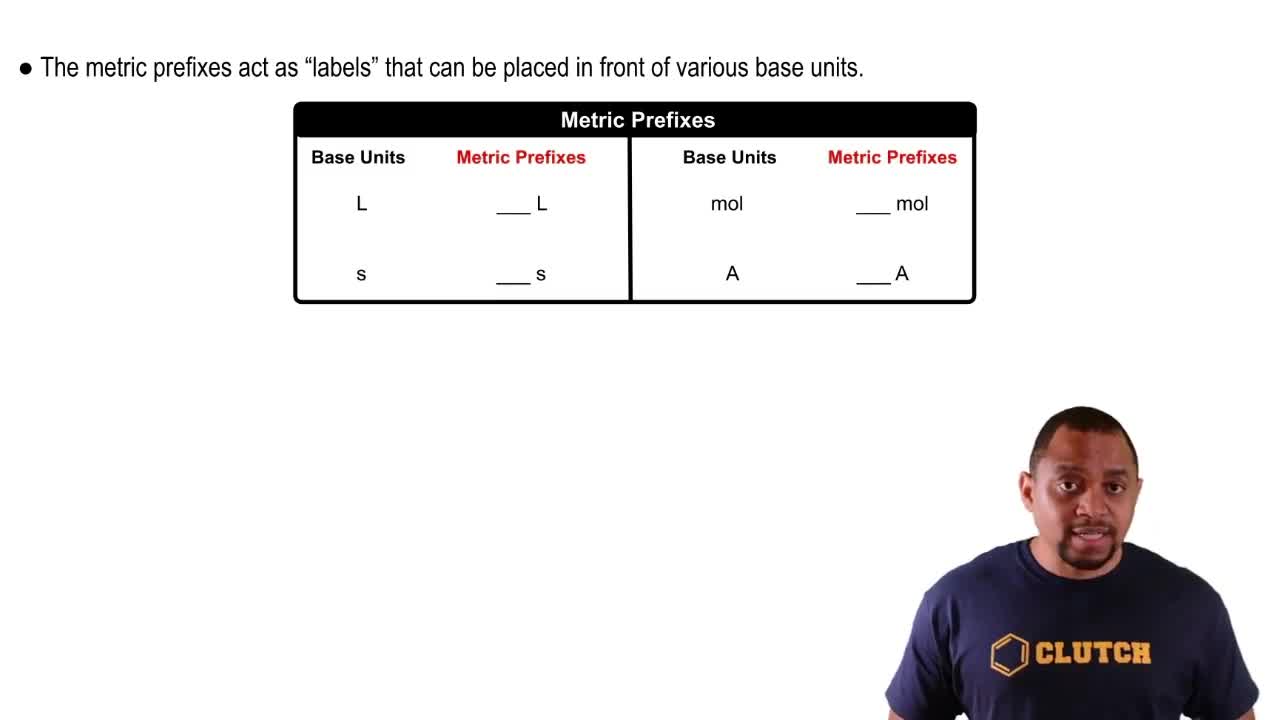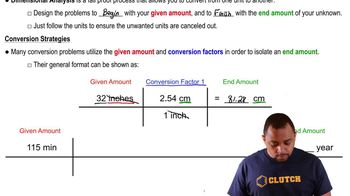Here are the essential concepts you must grasp in order to answer the question correctly.
Unit Conversion
Unit conversion is the process of converting a quantity expressed in one set of units to another. In this case, it involves converting millikelvins per second (mK/s) to kelvins per second (K/s) and millikelvins per millisecond (mK/ms). Understanding the relationships between these units is essential for accurate conversions.
Recommended video:
Metric Prefixes
Metric prefixes are used to denote multiples or fractions of units in the metric system. For example, 'milli-' indicates a factor of 10^-3. Recognizing these prefixes helps in understanding how to convert between different scales, such as converting mK to K or mK/ms to K/s.
Recommended video:
Dimensional Analysis
Dimensional analysis is a mathematical technique used to convert units by multiplying by conversion factors that equal one. This method ensures that the units cancel appropriately, leading to the desired unit. It is a crucial skill in chemistry for ensuring that calculations involving different units are performed correctly.
Recommended video:

 Verified step by step guidance
Verified step by step guidance


